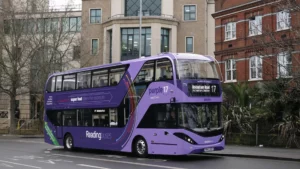The Mayor of Greater Manchester has called for Government to consider minimum air quality standards for parts of the strategic road network (SRN) to help reduce emissions.
The region will have the UK’s largest clean air zone (CAZ), covering 10 boroughs and 2.8 million residents, when it goes live from May 30, 2022.
However, Greater Manchester Mayor, Andy Burnham, says he is disappointed that the new CAZ will only apply to roads under local authority control. Major routes, not subject to the restrictions, are controlled by Highways England, reports Fleet News.
“We’ve been creating a large clean air zone for Greater Manchester, because we have illegal levels of air pollution in all 10 of our boroughs,” he said.
“That motorway network cuts through pretty every element of our city region, but, currently, Highways England is saying it won’t apply the clean air zone to the strategic route network. It’s only the local roads that we control that will be subject to the clean air zone. I can understand in the short term where they are coming from, but it’s still the case that the pollution coming off those vehicles comes very close to some of our poorest communities where the M6 slices through Wigan or the M602 in Salford.”
Mr Burnham was speaking at the International Net Zero Local Leadership conference, organised by UK100 and the West Midlands Combined Authority (WMCA), that Highways England’s stance is “not sustainable” in the longer term and the Government will have to work with the freight industry to allow similar minimum CAZ pollution standards to apply to the SRN.
“Post pandemic we have to become much more serious about health,” he added. “We feel in going ahead with our clean air zone that things we’ve tolerated up until now, we shouldn’t tolerate any more.”
Ministers have agreed to the inclusion of a strategically important trans-Pennine section of the A57 and A628, that passes through the villages of Hollingworth and Mottram.
The local council, Transport for Greater Manchester (TfGM) and Highways England are trying to establish how the charging will be applied to this section of road and, as a result, it is not expected to be included when the CAZ first opens.
Sections of the A575 and A580 near Worsley could also be included, subject to local authority approval, with a consultation planned.
Mr Burnham said Manchester’s CAZ is an opportunity to change the vehicles on the region’s roads. He also sees it as a “catalyst” to create a “London-style public transport system”.
Recently in Manchester, buses have recently been brought under local authority control for the first time in 35 years, which will allow them to combine with trams in Manchester.
“It’s that integrated consistent ticketing approach that I think will tip the balance in favour of public transport and away from the car.”






















